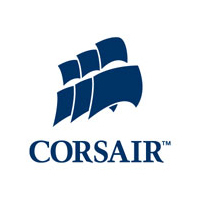Corsair's Extreme SSDs Use Indilinx Controller
Corsair discovers that Indilinx Barefoot controller and Samsung MLC NAND flash memory are good ingredients.
We love SSDs, but we have extra love for the fast ones. Corsair this week announced its Extreme Series SSD, which help to make us love it instantly thanks to its use of the Indilinx Barefoot controller and Samsung MLC NAND flash memory.
The Corsair Extreme SSD model line consists of the X32, X64 and X128 – predictably in 32 GB, 64GB and 128GB densities respectively. All models boast the same impressive read speeds of up to 240 MB/s and write speeds of up to 170 MB/s.
“The combination of the Indilinx Barefoot controller, Samsung flash memory, and 64MB of on-board cache delivers blistering, stutter-free performance, eliminating the bottleneck imposed by traditional mechanical hard disks,” said Jim Carlton, VP of Marketing at Corsair. “The new Extreme Series SSDs are ideal for use as primary drives in desktop and notebooks systems, and also for RAID 0 configurations in high-performance desktops for enthusiasts who want extreme performance.”
The Extreme Series SSDs feature end-user upgradable firmware to add new features such as the upcoming TRIM command for Windows 7 and other operating systems for maintaining optimal performance over time.
Corsair hasn't given official pricing for these SSDs, but expect the usual premium pricing.
Get Tom's Hardware's best news and in-depth reviews, straight to your inbox.
-
mlcloud ReplyCorsair hasn't given official pricing for these SSDs, but expect the usual premium pricing.
aka You can stop caring about these because they're not going to be affordable and they won't make any other SSDs afforadable. -
strandwolf What they'll get for it will be probably what I paid for a 2 gig drive back in 1995; I'd go for one.Reply -
Marcus52 Hmm well there's some of us who DO care and don't have the price-tag cynic's mindset mlcloud, lol. Speak for yourself!Reply
Not that I can afford the 2 of these things I'd want for RAID 0. Really, 4 for RAID 0+1.
My complaint here though is about the word 'blistering'. Why is everything half a percent faster called 'blistering'? Fact is, this thing is just catching up to Intel and OCZ, it's not 'blistering' anything, it's 'also can run fast'. Great that we have more tech that is competitive (which kind of thing WILL bring prices down), but quit over-hyping. It impresses no one. Corsair is a solid company with a good rep, it doesn't need hype that just makes them look cheap, trite, and trashy.
QQing done, lol
;) -
liquid0h I'ma wait another 6 months or so to see what the pricing is then. Maybe then they'll start cranking out enough to drop em down some.Reply -
fuser At the current rate of progress I think I'll have an SSD as my system drive by early 2010.Reply -
For notebook I would like to see some specs first, and perhaps how the drive operates on a SATA and SATA2 port.Reply
Especially power savings over my traditional Toshiba MK1234 drive, which is considered an average energy saving on a notebook. -
doomtomb There are three SSD controllers: Indilinx, Samsung, and JMicron.Reply
Indilinx is for pure speed with no "self-healing" to maintain top speed for years down the road.
Samsung is slightly slower but still pretty quick and does offer the "self-healing" which prolongs the speed and life of the drive.
JMicron is for budgets and people that like mi-mi-mi-micro stuttering. -
hrrmph Buyer beware: Like many other manufacturers' SSDs, the smaller ones don't reach the 240 / 170 speeds. Only the 128GB will reach that.Reply -
thejerk doomtombJMicron is for budgets and people that like mi-mi-mi-micro stuttering.Reply
lol, nice -
Robert17 Just a note: I bought a "cheap" SSD, Patriot Warp v2, 32gb JMicron, to get my feet wet with SSD. Very glad I did. Contrarians aside, I've had no stuttering, and compared with the platters I've used since my first build, a used IBM 10mb 4 pound rattle-trap, I'm looking forward to the future of these and other storage improvements. I note that my boot from Post time was only 30 seconds with XP 32bit, Samsung platter at 7200rpm; the SSD with RC7 64bit is half that time. It's opened a whole new train of thought about the direction my next build will be. And besides, I've spent $99 far more poorly in my life.Reply

